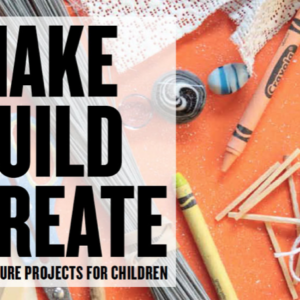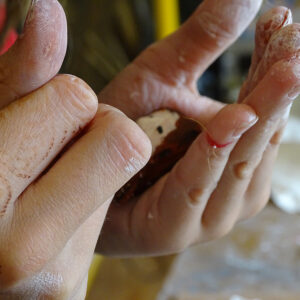AccessArt at the Houses of Parliament: Permission to Make
On Tuesday 3rd May 2016 Paula Briggs and Sheila Ceccarelli presented the AccessArt New Manifesto for Making at the Houses of Parliament, at the All Party Parliamentary Group for Art, Craft and Design Education.
Please read, share and comment. We welcome your views. Thank you.
“My name is Paula Briggs, and I’m here with my friend and colleague Sheila Ceccarelli, and together we co-founded AccessArt. Thank you to Susan Coles for inviting us to speak – we appreciate the opportunity, and to NSEAD and the Campaign for Drawing for their support. And it’s been wonderful to hear about the work taking place in schools across the country – very uplifting and a huge thank you for that.
To start, just a few words about AccessArt. AccessArt is a charity that aims to inspire high quality visual arts teaching, learning and practice. We do this through our evolving collection of online resources, online participatory projects and physical workshops and events. We were established in 1999 and we’re extremely proud of what we’ve achieved and of our creative output. There’s just two and a half of us: we’re unfunded – relying on income from memberships (we now have around 2000 members made up of 50% teachers and 50% creative practitioners) to carry out our activities.
I should also give you a little context about Sheila and I to make sense of what follows: Sheila and I were both makers as children. We were both lucky enough to have parents who gave us time, space and materials, and taught us that time spent making things was a good use of our time. We had teachers who valued making, and this shared passion was the driving force in our setting up AccessArt – a belief that we could inspire and enable others to pursue their own creative journey.
I want to speak today about how we (collectively) might give permission to the next generation to make. I use the word “make” in its loosest sense: to describe any activity which connects the hand, eye, brain, and which results in a transformative experience (transformative for both materials and the person involved, in addition to those who then experience the transformation third hand). Making a sculpture, making a print, making a model, making a film, making a painting, making a costume… the list goes on.
I think we should stop for a moment to recognise just what an incredible act that is – that we can take thoughts, impressions, instincts, add materials, and through our hands (and tools) manipulate those materials of the world to create something new. Let’s not underestimate what an important, unique, optimistic, intelligent act that is. And let’s remember how fundamental that is to us as a species – EVERYTHING around us is a result of our urge to transform, manipulate and reshape.
And yet, in 2016, we have children in schools who spend NO portion of their day, week and in some cases term, engaged in activities which involve them manipulating the world in a physical way.
- Does it matter if children don’t use their hands to connect eye, brain, heart with the material world?
- Do we want to create a future generation of creative contributors?
- Do we want to empower children with the idea that they can transform the world for the better?
- How will the artists, architects, craftspeople, makers, designers, builders, plumbers, carpenters, engineers, surgeons of the future begin to explore and realise their ability to manipulate?
AccessArt has tried throughout its 27 years, to remain apolitical. Instead we attempt to create positive and outward looking projects in direct response to perceived need. So, in recognition of the importance of our ability to make things, we have grouped our ongoing strands of activity, described below, into the AccessArt New Manifesto for Making. The Manifesto describes four key areas that AccessArt has identified in which we can work together to bring change. We hope this inclusive action plan will enable us ALL to support and enable making and makers. Please join in where you can.
The AccessArt New Manifesto for Making
No. 1 Quality of Experience
First of all, we need to be brave. Because we want to defend art, I think sometimes it’s hard for us to admit that actually we have a lot of art in schools across the country which is not well taught. We need to recognise that not all art teaching is actually worth defending. That was really hard for me to write, and I do not like to criticise, and I certainly do not mean to criticise those who are teaching. There is a great deal of very good (outstanding) teaching in art, and lots of average teaching in art. We recognise the reasons for the (well-meant) but less-than-great teaching in art is often due to lack of specialist teachers and lack of training opportunities for those involved, as well as time and money pressures. BUT, until we raise standards in art teaching, across the board, then it will be hard for us to always defend the importance of art in schools, and the opportunities for children to make will continue to decline:
So, putting aside the teaching which is already outstanding, we need to concentrate on making sure that all art in schools is taught with as much rigour as any other subject. I certainly don’t mean rigorously assessed and didactically delivered. There are many creative ways to teach rigorously. A lot of the making which takes place in schools is not of a good enough quality: there is an underestimation of what kind of materials and tools children can use, and of the kind of creative journey children are capable of. Making is often too easy, too controlled, too limited in scope and vision and the outcomes too closed and poor. And when we don’t respect the process of making, we drive the subject into a corner which we can easily get rid of: we talk ourselves out of the activity. We can do with out it. Gone.
So No.1, we need to work together to raise quality in art education – right from the youngest primary school children. What if:
- We ASPIRE to deliver the best facilitation we can, wherever it takes place;
- We REVERSE the deskilling of teachers through accessible, cost effective, relevant training (online and physical);
- We SHARE examples of good practice, which is most definitely happening around the country.
NO. 2 Artists CAN transform lives
It’s not that artists make better teachers, but they can make a different kind of teacher, and one which complements existing teaching. What if:
- Artists are encouraged to see their potential as educators? How can we enable artists to recognise their unique skills as communicators, enablers and inspirers?
- Artists see artist in education opportunities as a role to aspire to, not a role to fall back on?
- Every artist works with a group of children and changes lives one child at a time?
- It turns out that artists can save the world?
No. 3 Empowering parents to ask
Parents feel enabled to contact their child’s school if they have concerns about maths, english, friendship problems… What if:
- Parents understand the importance and gravity of the lack of making in their child’s school week? Not just to potential artists and makers, but also to architects, builders, plumbers, engineers, scientists, surgeons… anyone who exists in the physical world (all of us), those who aren’t motivated or feel included by existing lessons, those who are in danger of exclusion, those who struggle socially…
- Parents begin to understand the problem with the disconnect between a school which doesn’t provide opportunities for hands-on experience of the physical world, with high quality creative experience, and the statistics about the cultural economy (at the moment parents are not aware of the disconnect);
- Parents feel able to ask of the school the simple question “What did my child make with their hands this week?”
No. 4 Telling children it’s more than OK…
We all need someone to give us permission to make:




Bonnie White
June 12, 2016 @ 8:36 am
Just read this excellent article and it got me thinking. Why don’t we get parents involved more too. Last year I took 45 yr 9 s up to London for four days doing everything from drawing in the V&A , Tate modern, drama workshop at the globe and seeing a production , seeing Billy Elliott, gamelan workshop at Royal College of Music, guide tour of House of Parliament and sitting in on a live debate in both House of Lords & Commons – the one thing parents kept saying was I wish it was me and that included the drawing part too – so my question is should I open up the summer drawing course as 18+ to my parents too or would that be inappropriate?
Sheila, AccessArt
June 12, 2016 @ 11:24 am
Completely agree! Sounds amazing what you are doing and agree that parents are very best placed often to enrich creativity in a school. Giving parents creative opportunities sounds wonderful. AccessArt are in the process of developing pages specifically parents – pointers on what they can bring to the table and get involved in a school’s creative development – whether it be establishing an ‘art club’ or joining the Governors as an ambassador for creativity. Thanks very much for your comment. Best wishes, Sheila (AccessArt)